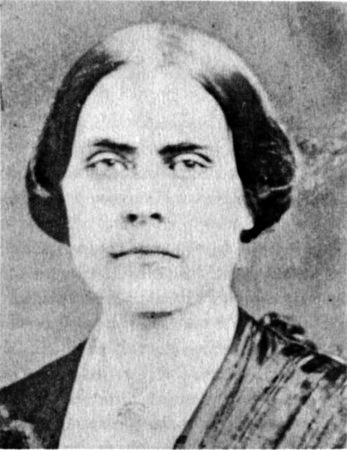With all the news coverage of women's rights being taken away I thought it's good to be reminded of the women who fought for our right to vote. Lets not take our right to vote for granite. Women in our past fought hard for our civil rights . Born into a family of activist Quakers, Susan B. Anthony, who never married, became head of the girls' department at Canajoharie Academy, where she had been a teacher for many years. During that time, her interest in the temperance movement brought her to rallies, where she learned that as a woman she was not entitled to speak at them, so in 1852, at age 32, having met Elizabeth Cady Stanton in the temperance movement, she left her post at the school and joined the women's rights movement. She worked on many significant documents for movement and helped organize the Seneca Falls Convention on women's rights that drew 300 people. She became a notable lecturer and traveled extensively in the U.S. to advocate for women's right to vote, for their right to own their own property and retain their earnings, for the need for women's labor organizations and for the abolition of slavery. She spoke undaunted in the face of hostile crowds. She also co-edited several volumes of History of Woman Suffrage with Stanton, Ida Husted Harper and Matilda Joslin Gage and helped Harper write The Life and Work of Susan B. Anthony: A Story of the Evolution of the Status of Women.
She lived to see some of her work pay off. Slavery was abolished in 1865, many states passed laws in the 1850s and 60s that strengthened women's right to own and keep property, and because of her work in Rochester, where she lived, the University of Rochester, began admitting women in 1900. In 1905, at age 85, Susan B. Anthony met with President Theodore Roosevelt lobbying for the passage of a Constitutional amendment to give women the right to vote. Sadly, she didn't get to see that day. The New York Times reported in her March 1906 obituary that she'd recently remarked, "To think I have had more than 60 years of hard struggle for a little liberty, and then to die without it seems so cruel."
Success came 14 years later, when Congress ratified the 19th Amendment to the Constitution guaranteeing women's right to vote, the project Susan B. Anthony had worked so hard for, along with Elizabeth Cady Stanton and so many other brave women. All those years before, when Susan B. Anthony was told she couldn't speak at the temperance rallies, she knew that gaining the vote for women was essential for their voices to be heard not only in but outside of government.
In 1978, President Carter signed the Susan B. Anthony Coin Act into law making her image the first of a woman to appear on a United States coin. The Susan B. Anthony dollar began circulating in 1979, replacing Eisenhower's image, and was minted again in 1999.
Despite the fact that women in the U.S. are heard today louder and more clearly than ever, there is still much work to be done in bringing women's concerns to their rightful place in the national agenda. What can the warrior inside of you bring to the table in discussions and presentations that will continue to guarantee women's voices and freedom?
For strength and inspiration, read about Susan B. Anthony and watch the videos on this website:
http://www.biography.com/people/susan-b-anthony-194905#death-and-legacy&awesm=~oHjQ1nHmKIY3P7
